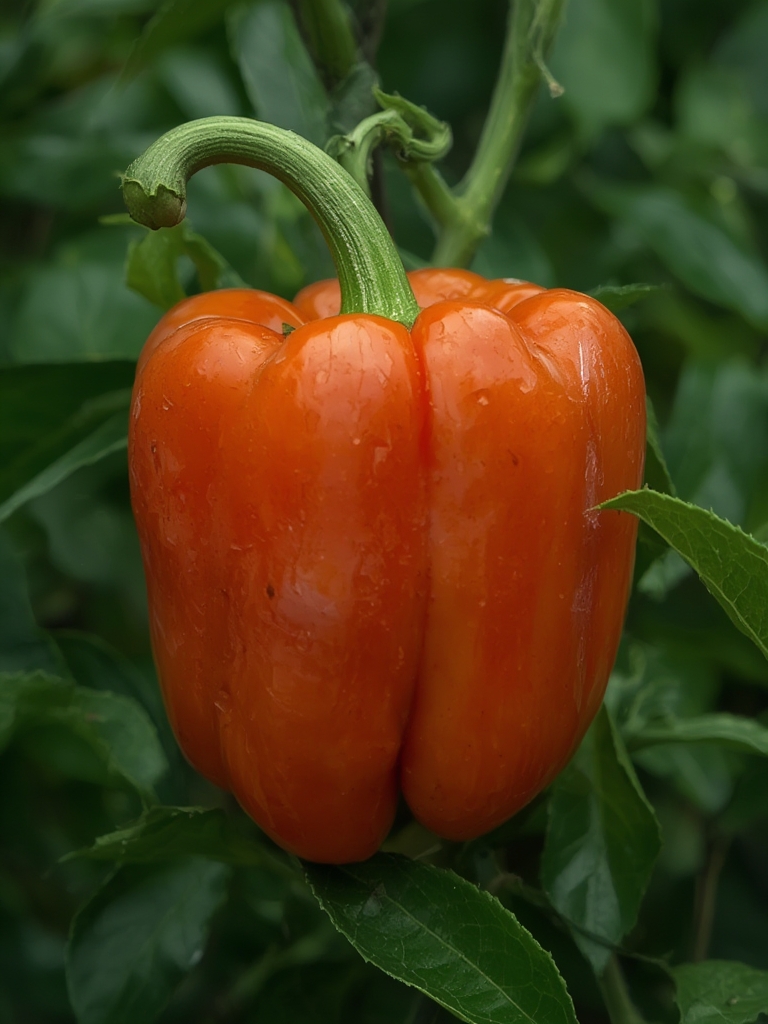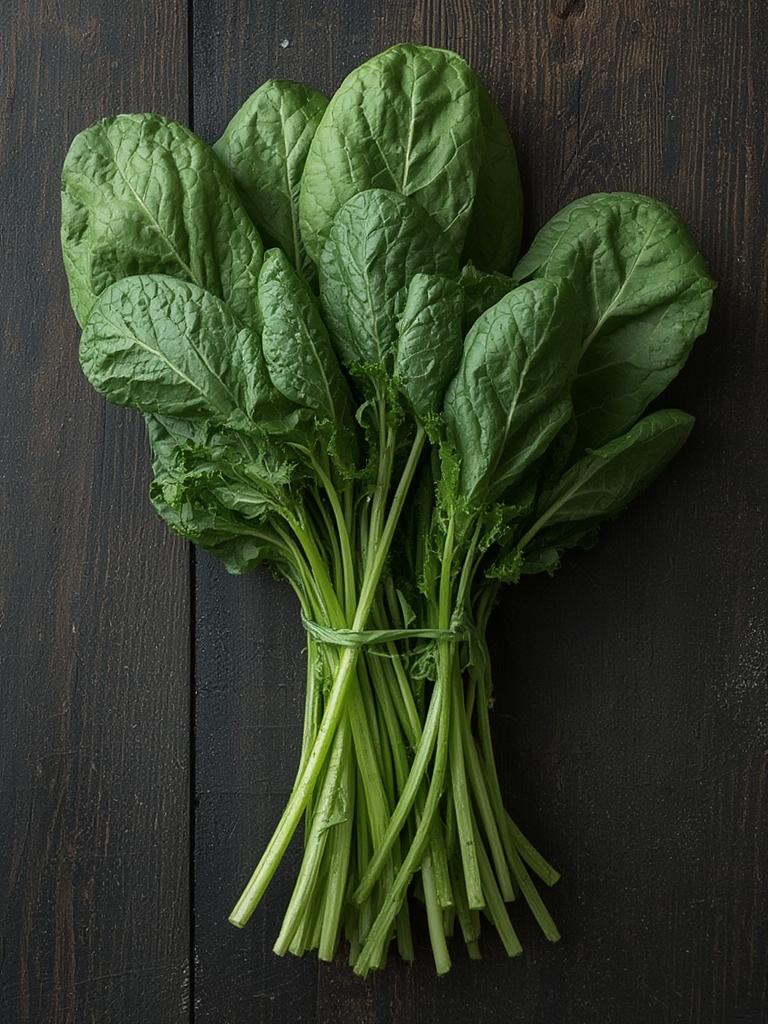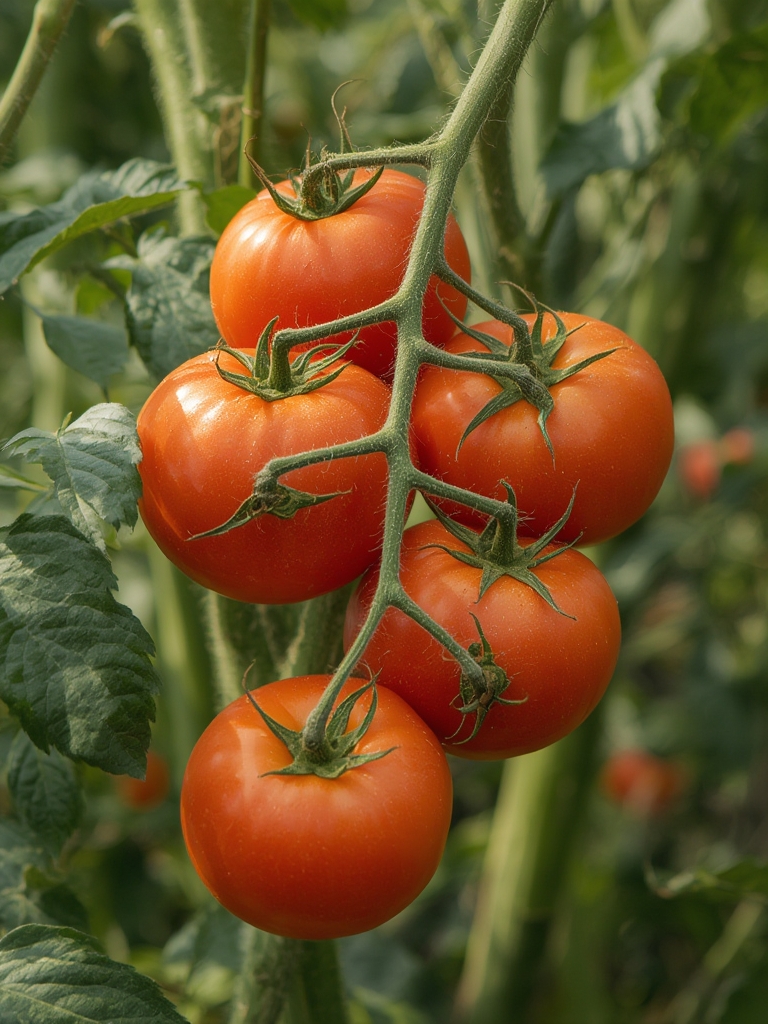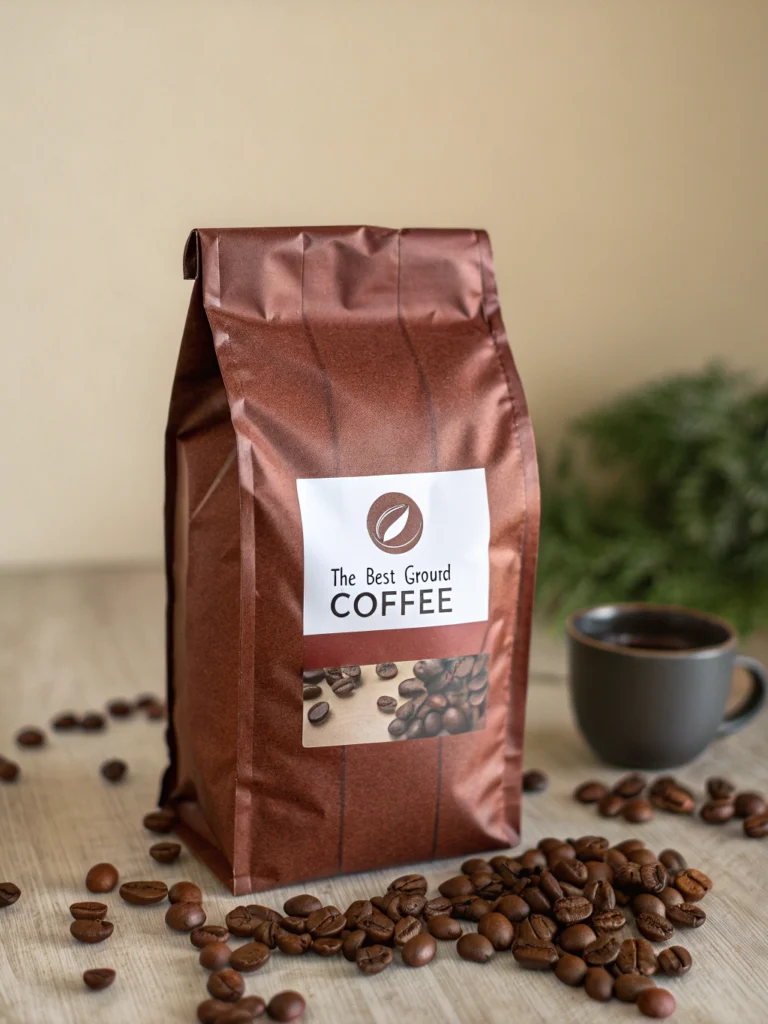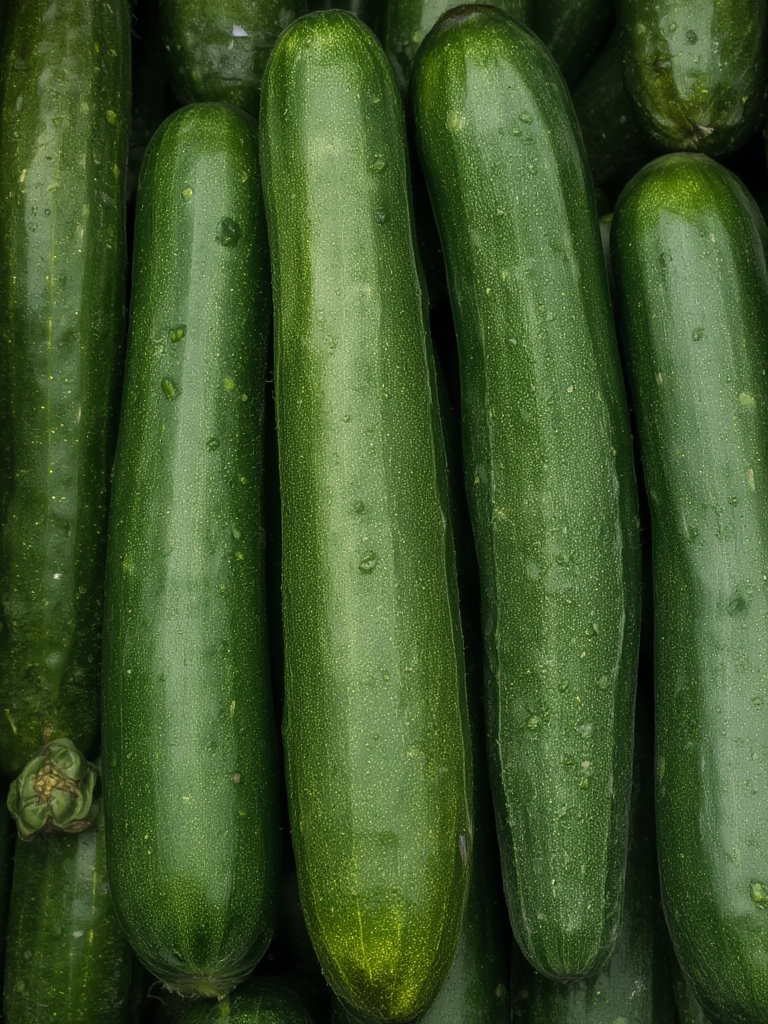How to grow Bell Peppers :
Have you ever tasted a homegrown bell pepper and wondered why it’s so much more flavorful than store-bought varieties? Growing your own Bell Peppers at home can be a rewarding experience that provides you with fresh, nutritious produce right from your garden. These versatile vegetables are not only delicious but also relatively easy to grow, even for beginner gardeners. With the right knowledge and care, you can cultivate colorful sweet peppers that will elevate your home-cooked meals and provide a sense of gardening accomplishment.
Materials & Supplies
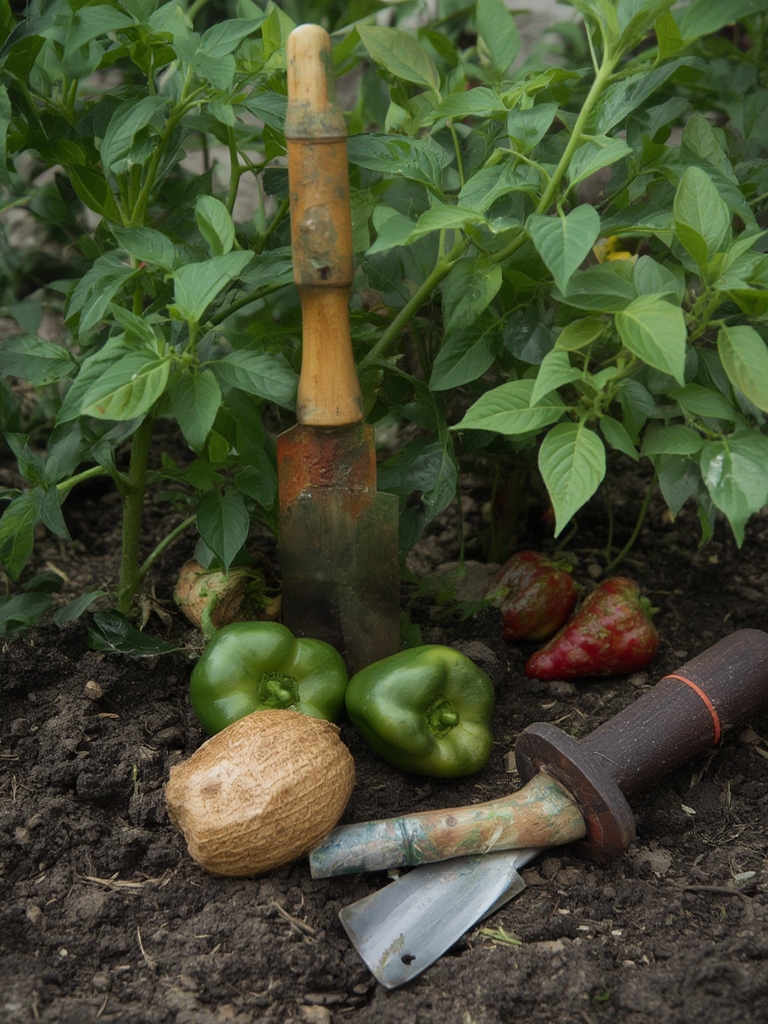
To start your bell pepper growing journey, you’ll need:
- Seeds or seedlings: Choose high-quality bell pepper seeds or young plants from a reputable nursery
- Growing containers: 5-gallon pots with drainage holes (if container gardening)
- Soil mix: Well-draining potting soil with compost mixed in
- Support stakes: 2-3 foot bamboo or wooden stakes
- Garden twine: For securing growing plants to stakes
- Fertilizer: Balanced vegetable fertilizer (10-10-10) or organic alternatives
- Watering can or irrigation system: For consistent watering
- Garden gloves and basic tools: Trowel, pruners, and garden fork
- Row covers (optional): For protection in colder climates
- pH testing kit (optional): To ensure optimal soil conditions (6.0-6.8 is ideal)
Timing / Growing Schedule
Bell peppers require a long growing season of 60-90 days from transplanting to harvest. Start seeds indoors 8-10 weeks before your last spring frost date. Transplant seedlings outdoors when nighttime temperatures consistently stay above 55°F (13°C), typically 2-3 weeks after the last frost. Expect to harvest peppers about 2-3 months after transplanting, with peak harvests in mid to late summer. Compared to faster-growing vegetables like radishes (3-4 weeks), peppers require patience but reward you with months of continuous harvesting.
Step-by-Step Instructions

-
Seed starting: Plant seeds ¼ inch deep in seed-starting mix. Keep soil consistently moist and warm (70-80°F). Pro tip: Use a heat mat to improve germination rates.
-
Hardening off: Once seedlings have 2-3 sets of true leaves, gradually expose them to outdoor conditions over 7-10 days. Start with 1 hour, increasing daily to build resilience.
-
Transplanting: Space plants 18-24 inches apart in garden beds or individual containers. Plant at the same depth as they were in their containers, adding a tablespoon of Epsom salt to the planting hole to prevent magnesium deficiency.
-
Support: Install stakes when plants reach 8-10 inches tall, securing stems loosely with garden twine in a figure-eight pattern.
-
Watering: Provide 1-2 inches of water weekly, maintaining consistent moisture. Avoid overhead watering to prevent disease.
-
Fertilizing: Apply balanced fertilizer every 4-6 weeks, switching to a lower-nitrogen formula once flowering begins.
-
Harvesting: Pick peppers when they reach full size and desired color, using sharp scissors to avoid damaging the plant.
Nutritional Benefits
Bell Peppers are nutritional powerhouses, offering exceptional vitamin C content (more than oranges!), with red varieties containing the most. They’re also rich in vitamins A, E, B6, and folate, plus beneficial antioxidants like carotenoids and quercetin. Home-grown peppers typically contain higher nutrient levels than store-bought counterparts since you can harvest them at peak ripeness.
Tips, Alternative Methods, or Gardening Advice
For container growing, select compact varieties like ‘Redskin’ or ‘Sweet Banana.’ In cooler climates, consider growing bell peppers in black containers that absorb heat or use row covers at night. For indoor growing, choose dwarf varieties and use grow lights for 14-16 hours daily. To maximize production in limited space, try vertical gardening techniques with trellises or wall-mounted planters.
Common Mistakes to Avoid
- Planting too early: Wait until soil temperatures reach at least 65°F to prevent stunted growth.
- Inconsistent watering: Install drip irrigation or set a regular watering schedule to avoid blossom end rot.
- Overcrowding: Maintain proper spacing to ensure good airflow and prevent disease.
- Neglecting support: Provide stakes or cages early to prevent stem breakage when plants become heavy with fruit.
- Harvesting too soon: Allow peppers to develop fully for maximum flavor and nutrition.
Storage / Maintenance Tips
Store harvested peppers in the refrigerator crisper drawer for up to two weeks. For longer preservation, freeze chopped peppers or roast and store in olive oil. Throughout the growing season, pinch off the first few flower buds to encourage stronger plant development. Remove any yellowing leaves promptly and monitor for pests like aphids or hornworms, treating with insecticidal soap if needed.
Conclusion
Growing your own Bell Peppers provides a satisfying and nutritious addition to your garden. With proper planning, consistent care, and these practical tips, you’ll enjoy a bountiful harvest of colorful, flavorful peppers throughout the growing season. Start small, be patient, and don’t be afraid to experiment with different varieties to discover your favorites. We’d love to hear about your pepper-growing adventures in the comments below!
FAQs
- Why are my bell pepper leaves turning yellow?
Yellowing leaves often indicate nutrient deficiency, particularly nitrogen or magnesium. Apply a balanced fertilizer and consider adding Epsom salts to your watering routine. - How do I know when to harvest my bell peppers?
Harvest when peppers reach full size and desired color. Green peppers are technically unripe; they’ll eventually turn red, yellow, orange, or purple depending on variety if left on the plant longer. - Can I save seeds from my bell peppers for next year?
Yes, but only from open-pollinated or heirloom varieties, not hybrids. Select seeds from fully ripe peppers, rinse thoroughly, and dry completely before storing in a cool, dark place. - Why aren’t my pepper plants producing fruit?
Poor fruit set is often due to temperatures above 90°F or below 55°F, inadequate pollination, or excessive nitrogen. Try hand-pollinating flowers and adjust your fertilizer regimen accordingly. - How can I protect my peppers from pests naturally?
Introduce beneficial insects like ladybugs, use companion planting with marigolds or basil, and apply neem oil spray every 7-10 days as a preventative measure.

